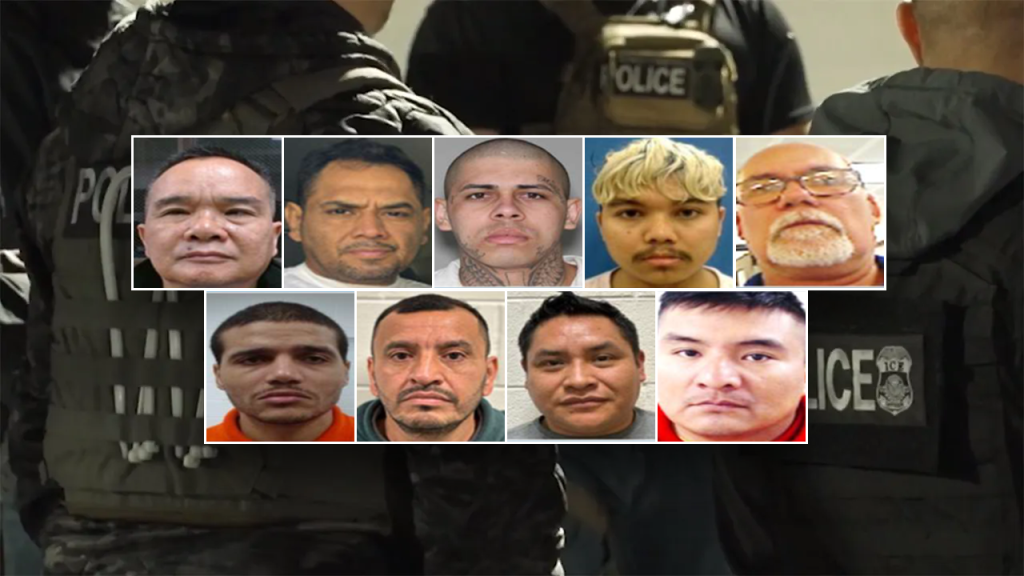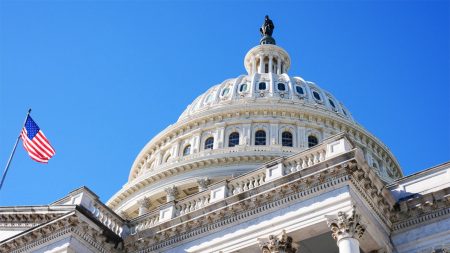ICE Continues Crackdown on Criminal Illegal Immigrants Over Halloween Weekend
Over Halloween weekend, U.S. Immigration and Customs Enforcement (ICE) intensified its efforts to arrest what they describe as the “worst of the worst” illegal immigrants across the country. According to a statement from the Department of Homeland Security to Fox News Digital, approximately 70 percent of ICE arrests involve individuals who have been charged with or convicted of crimes while in the United States. This ongoing operation has resulted in the apprehension of numerous individuals with serious criminal backgrounds, including those convicted of sexual offenses against minors, kidnapping, homicide, and drug trafficking, demonstrating the agency’s commitment to removing dangerous elements from American communities.
In California, ICE arrested several high-profile offenders, including Sisawang Khambounheuang from Laos, who was convicted of unlawful sexual intercourse with a minor in San Diego. Nearby in Los Angeles, Milton Rene Mendez-Arevalo from Guatemala was apprehended following a kidnapping conviction. These arrests highlight the focus on individuals who pose significant threats to public safety, particularly those who have committed crimes against vulnerable populations. The California operations are part of a broader effort that has targeted illegal immigrants with extensive criminal histories, including one individual reportedly with 49 prior arrests who appeared on ICE’s “worst-of-the-worst” list.
Texas saw particularly intensive enforcement activity, with over 120 illegal immigrants arrested in Houston alone. Among those apprehended was Hector Eugenio Ramirez-Martinez from Honduras, who had been convicted of indecency with child sexual contact in Harris County, and Francisco Nava-Garcia from Mexico, arrested after a conviction for assault on a family or household member. In another part of Texas, ICE arrested Kunal Chhetri, an Indian national convicted of alien smuggling in the Western District of Texas federal court. These arrests reflect the agency’s prioritization of removing individuals with violent criminal backgrounds and those involved in further illegal immigration activities.
The enforcement operation extended to Florida, where ICE arrested Lazaro Mateo Ruiz, a Cuban national convicted of homicide, weapon offenses, and robbery in Miami-Dade County. On Florida’s Gulf Coast, Juan Gomez-Gutierrez from Colombia was apprehended following his conviction for conspiracy to possess with intent to distribute five kilograms of cocaine while aboard a vessel in Tampa. These Florida arrests, along with the apprehension of Juan Brito-Rios in Tennessee for serious drug trafficking and money laundering offenses, illustrate ICE’s focus on removing individuals involved in organized crime and drug distribution networks that affect communities across the United States.
Even in Illinois, described in the report as a “sanctuary state” that has resisted federal immigration enforcement efforts, ICE continued its operations, arresting Brigidio Ovido Gomez Garcia from Guatemala. Garcia had been convicted of aggravated domestic battery/strangling, domestic battery, and driving under the influence in Wheaton, a Chicago suburb. This arrest highlights the tension between federal immigration enforcement priorities and local sanctuary policies that limit cooperation between local law enforcement and federal immigration authorities. Despite these challenges, ICE continues to pursue individuals with serious criminal convictions even in jurisdictions that may not fully cooperate with federal immigration enforcement.
DHS Assistant Secretary Tricia McLaughlin emphasized the administration’s commitment to removing dangerous criminal elements from American communities, stating that “President Trump and Secretary Noem unleashed ICE to remove the worst of the worst criminal illegal aliens from American communities.” She further noted that “Despite the Democrats’ government shutdown, ICE is continuing to arrest criminal illegal aliens across the country,” and highlighted that “While Americans enjoyed their weekends, ICE was hard at work getting the worst of the worst off our streets—including pedophiles, murderers, and kidnappers.” These statements reflect the administration’s framing of these enforcement actions as essential public safety measures, positioning them as protection for American citizens against criminal threats.
The ICE operations over Halloween weekend represent part of a broader immigration enforcement strategy that prioritizes the removal of individuals with serious criminal convictions. With arrests spanning multiple states and targeting individuals convicted of a range of serious offenses, from sexual crimes against children to homicide and drug trafficking, the agency demonstrates its focus on public safety concerns within its immigration enforcement mandate. As political debates continue around immigration policy and enforcement priorities, these operations highlight the complex intersection of public safety concerns, immigration enforcement, and the ongoing tensions between federal and local approaches to handling undocumented immigrants with criminal backgrounds in American communities.















